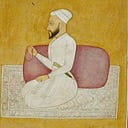Are Pashtuns South Asian or West Asian? This question can become surprisingly contentious in some quarters, and the answers given are often more informed by ideological priors than anything else. I’ll attempt to shed a modicum of clarity on this issue from a genetics standpoint, though by no means is this the final say.
Below is a PCA I made using modified GEDmatch Harappa Ancestry data. A number of South-Asian groups were included, but I only highlighted a few to avoid cluttering the chart. Samples were selected in order to present the full diversity of Indian admixture in each ethnic group. So for example, if ethnic group A’s samples ranged from 0–10% Indian, I’d select 5 individuals for the PCA, with roughly 0, 2.5, 5, 7.5, and 10% Indian admixture respectively. Ideally this gives us a reliable range to see just how South-Asian each group really is.
Pak-Pashtuns seem fairly South-Asian here, with four of the samples grouped near the Punjabi-Dardic cluster. One sample however does look quite Afghan. Running correlations across each group’s average admixture components results in Pak-Pashtuns showing a bit more affinity with the Kalash and Punjabi Khatris, than with their Afghan brethren across the border.
Afghan-Pashtuns seem to form their own unique grouping, initially continuing along the South-Asian cline, before appearing to break off in a more West-Asian direction. They are probably the most similar to certain Tajik populations, and seem roughly equidistant between Iranians and North-West Indians.
Future posts on this topic could likely tease out more info by focusing on the affect tribe and geography have on Pashtun clustering. There’s likely a relation there, though to what extent remains to be seen.
Ultimately I don’t think genetic affinity should (or does) play a large role in demarcating ones ethnicity. Regardless of where one clusters on a PCA chart, I think the more subjective cultural quirks are what actually makes us who we are, both at the individual and group level.
